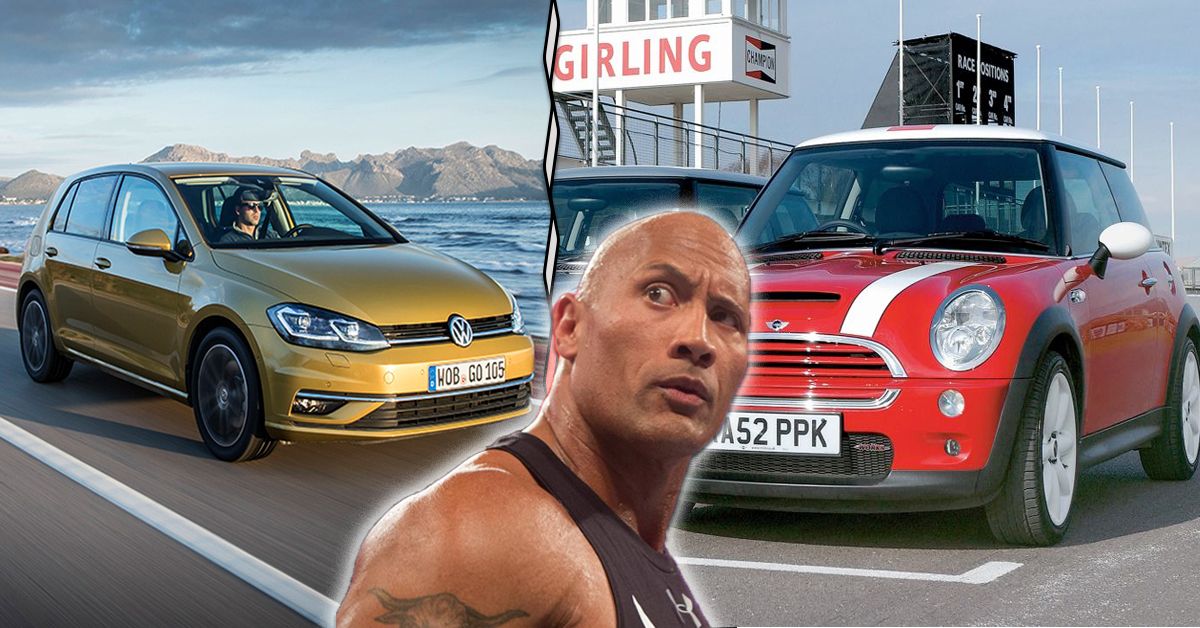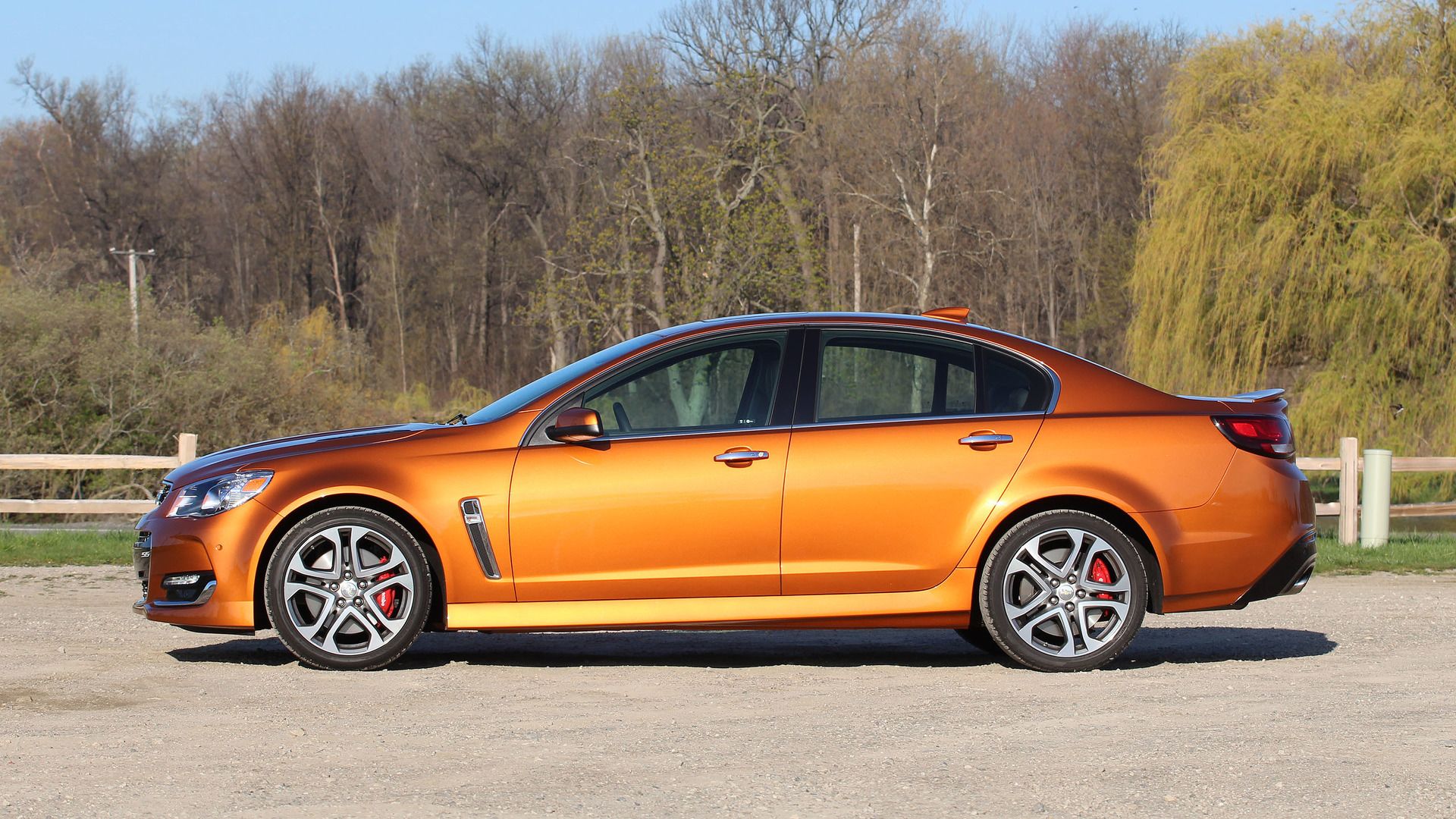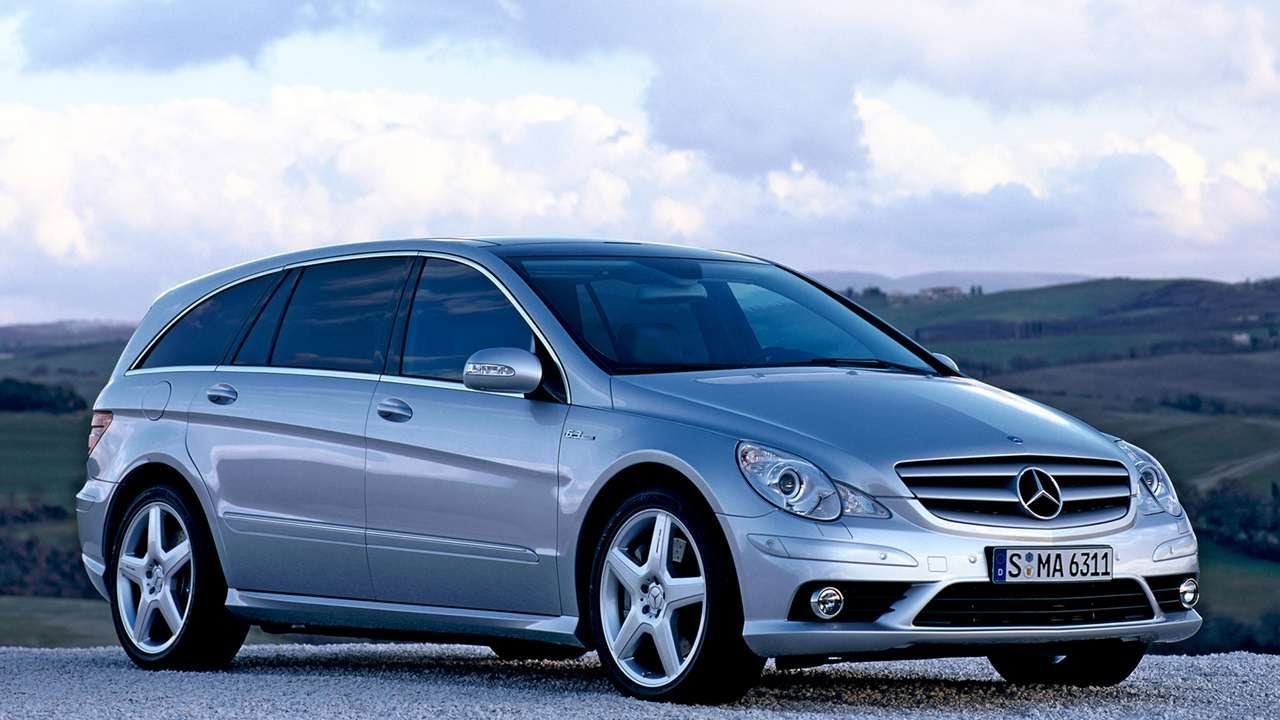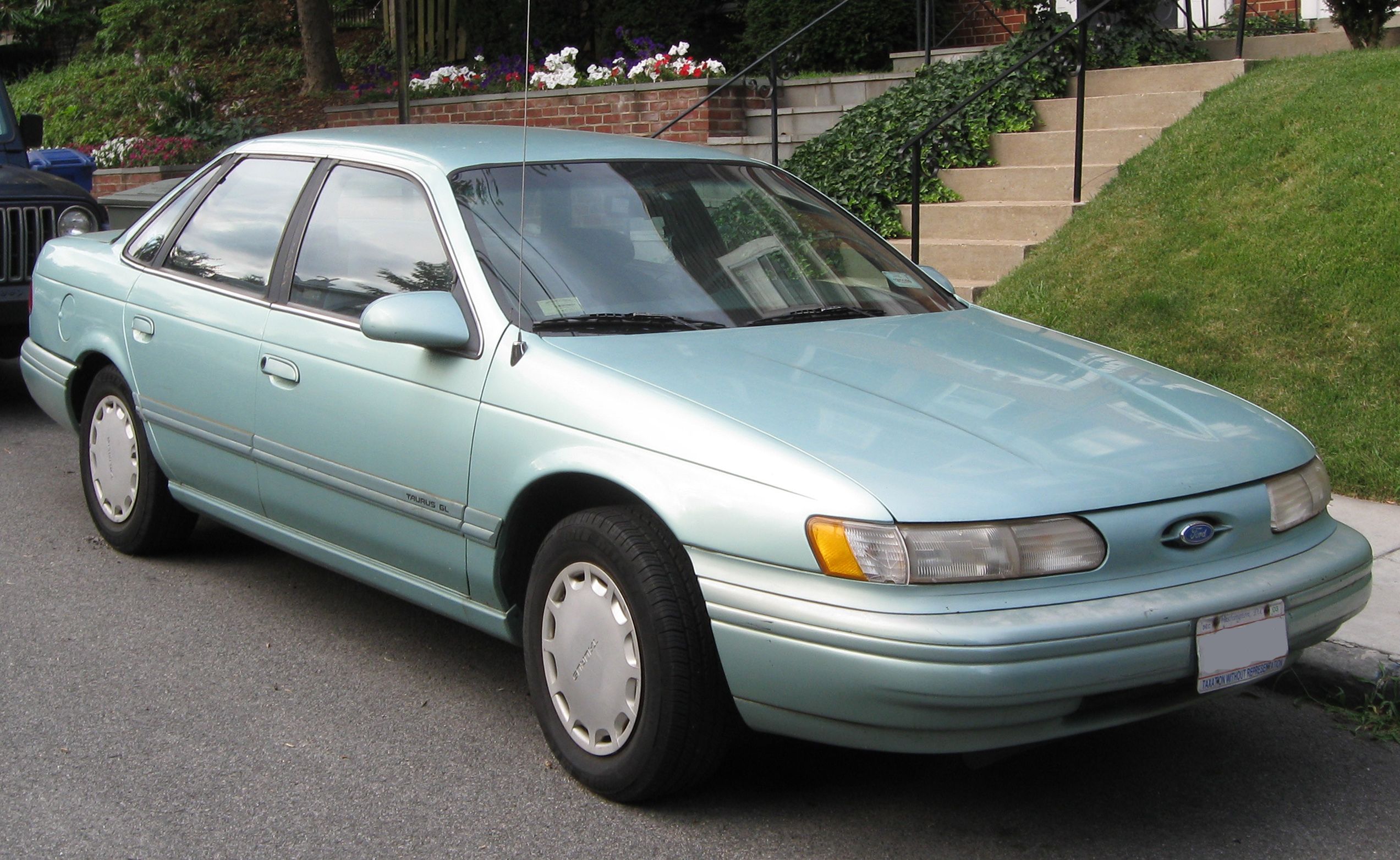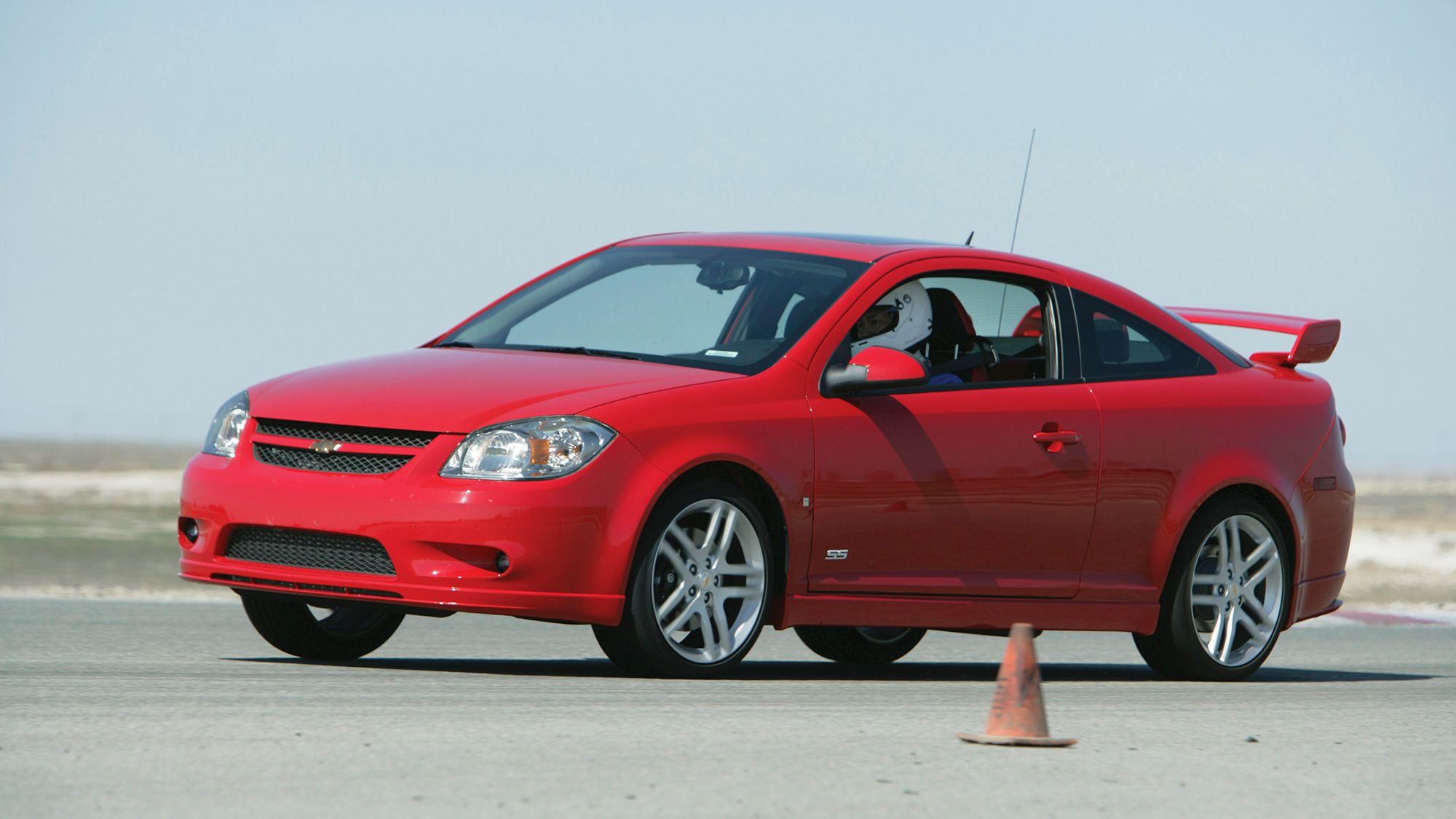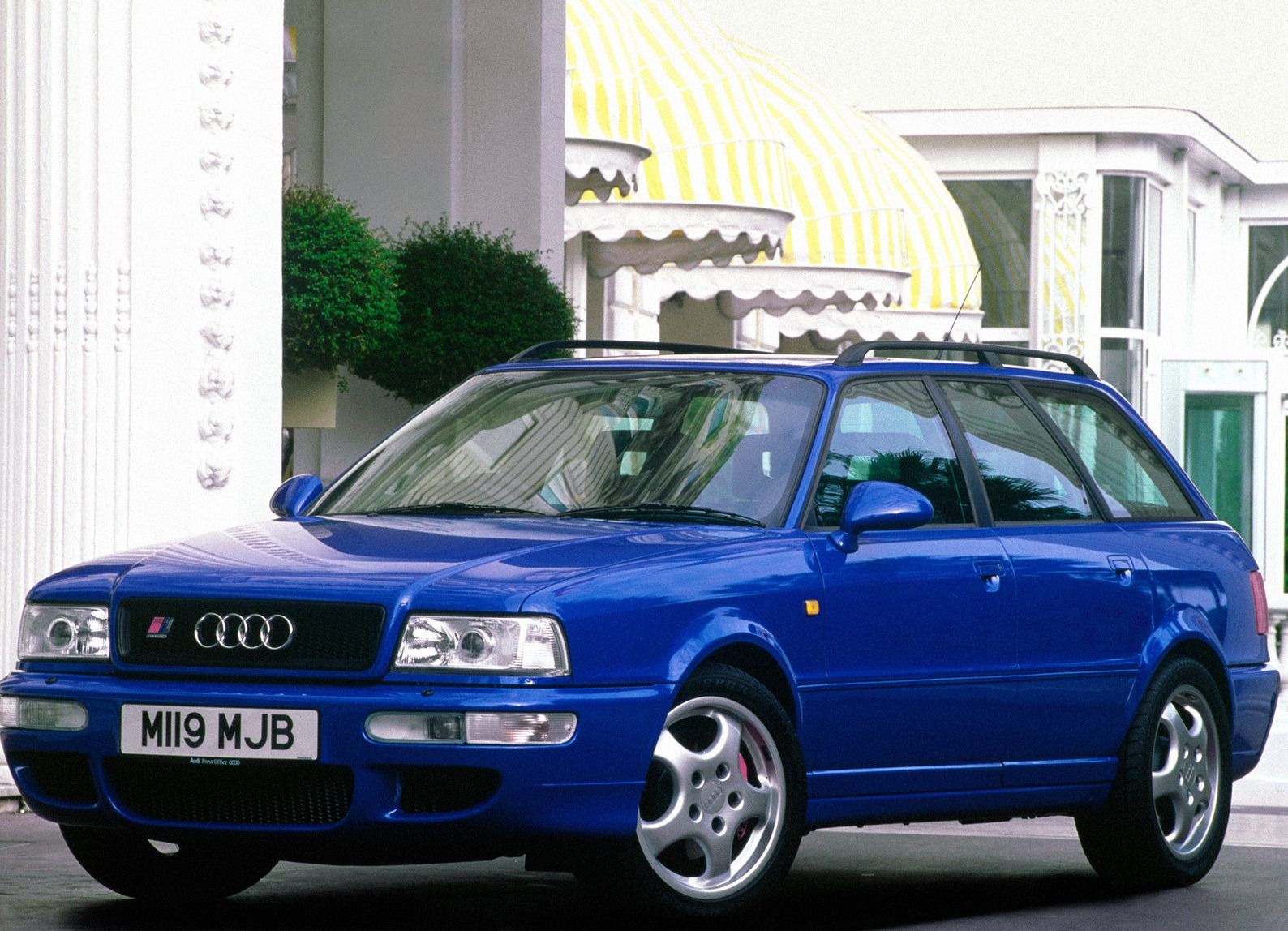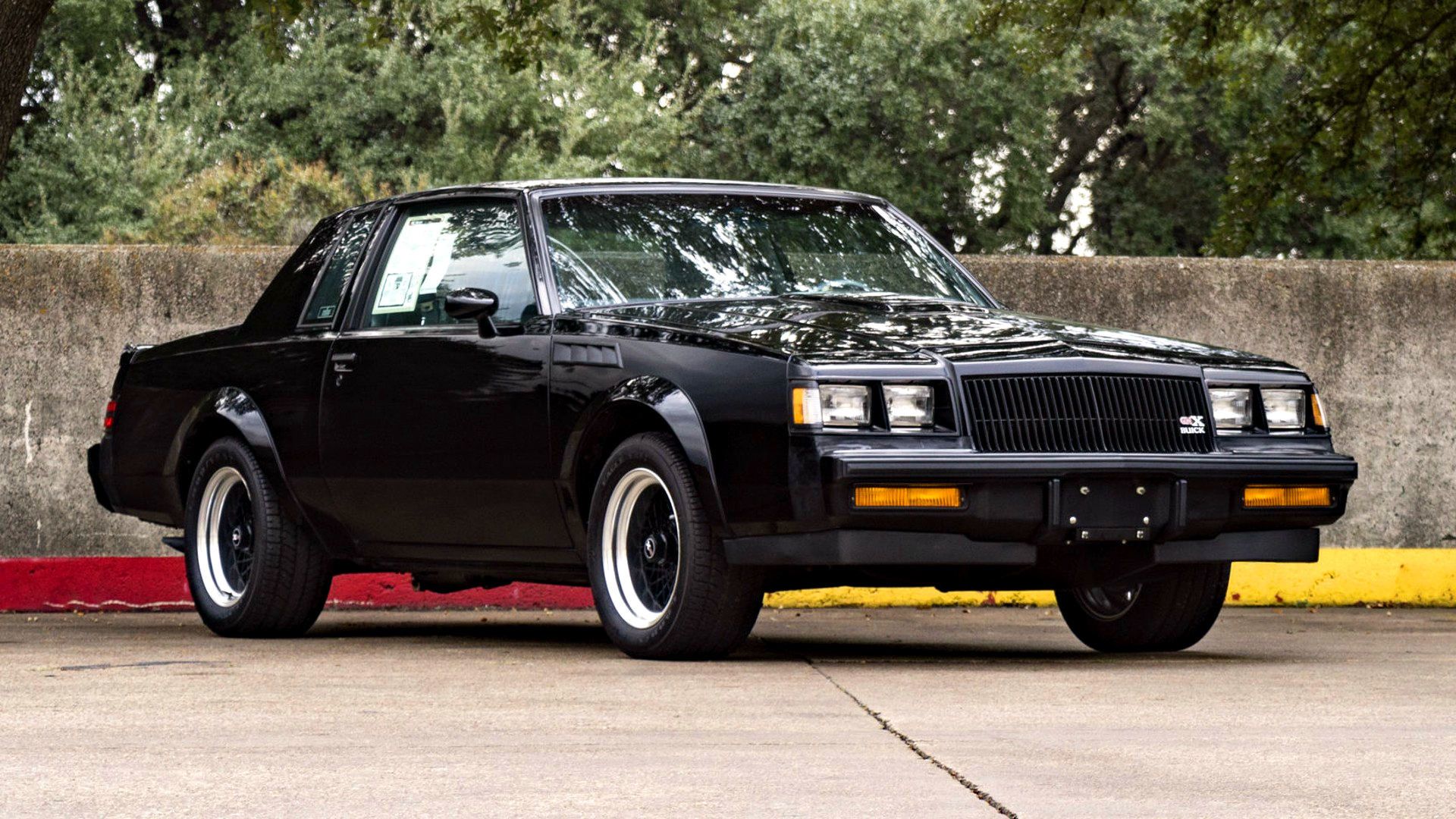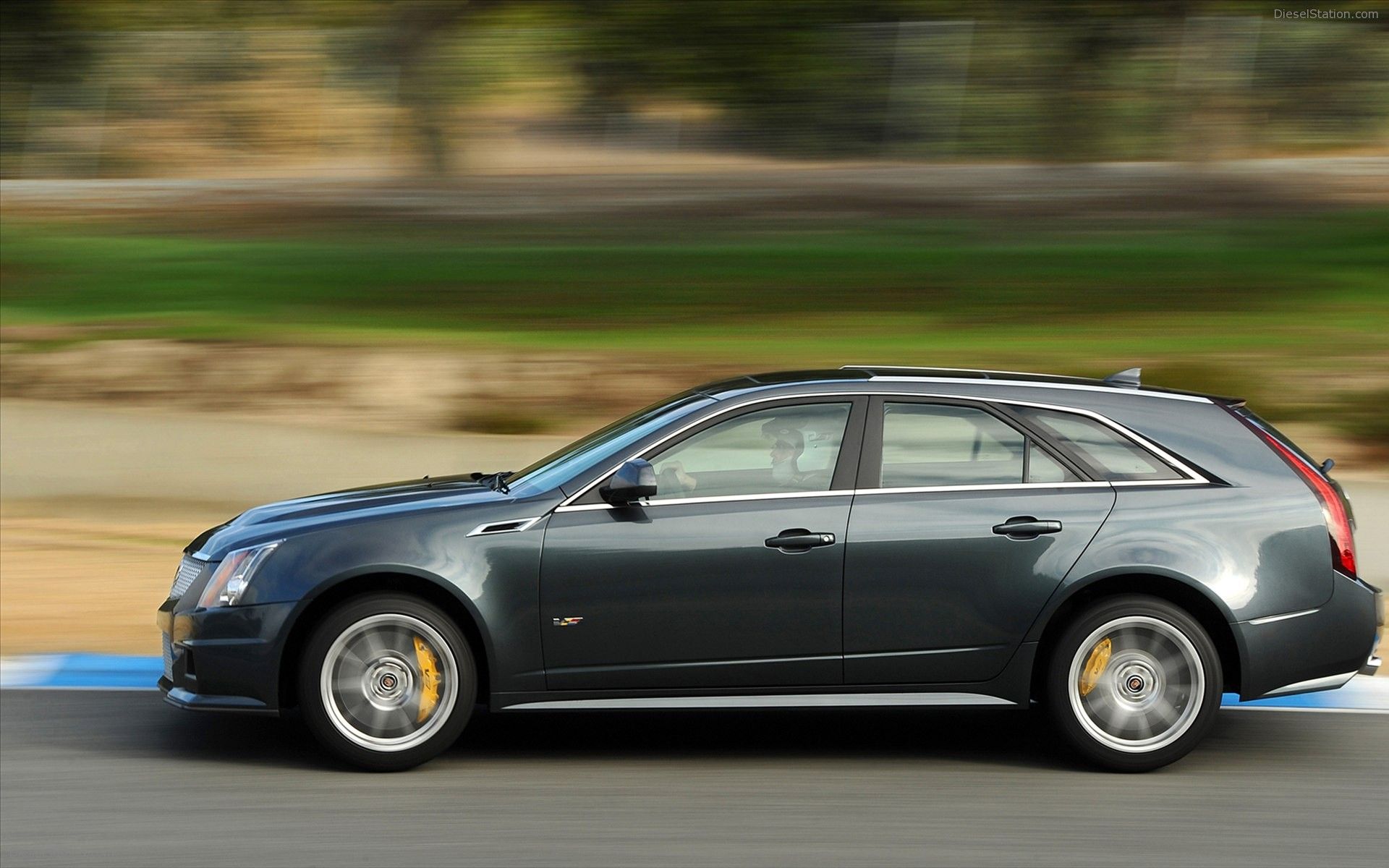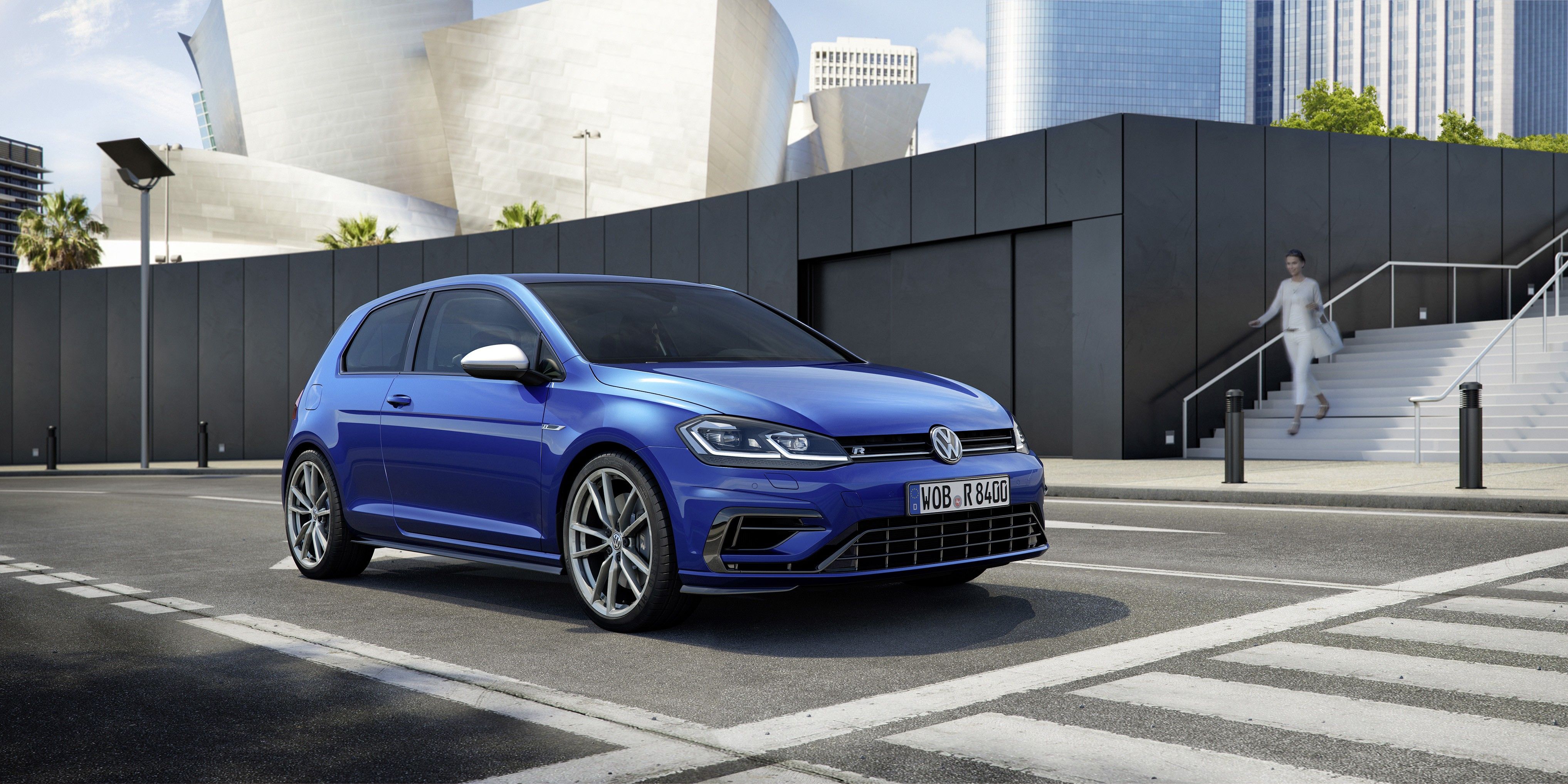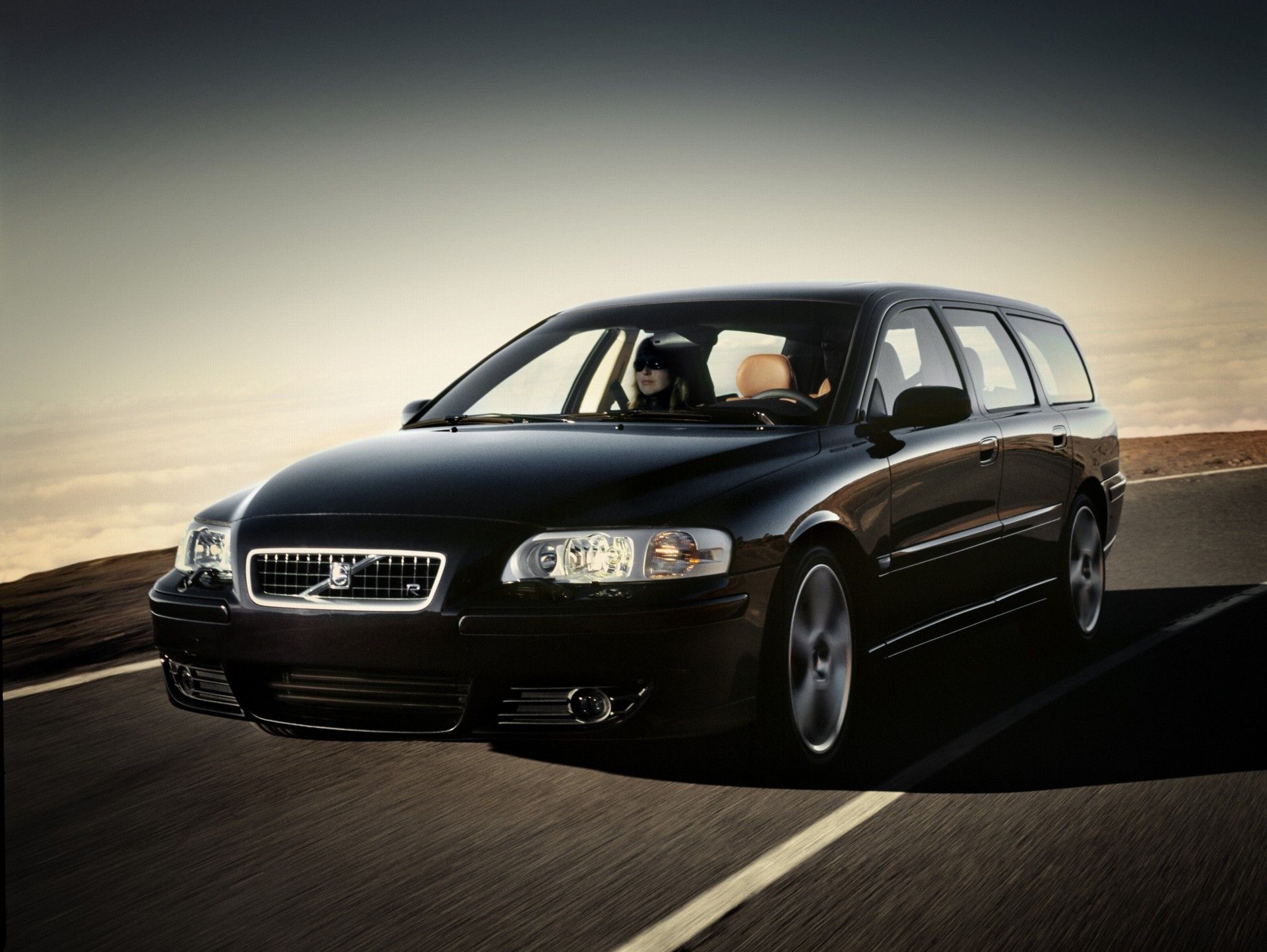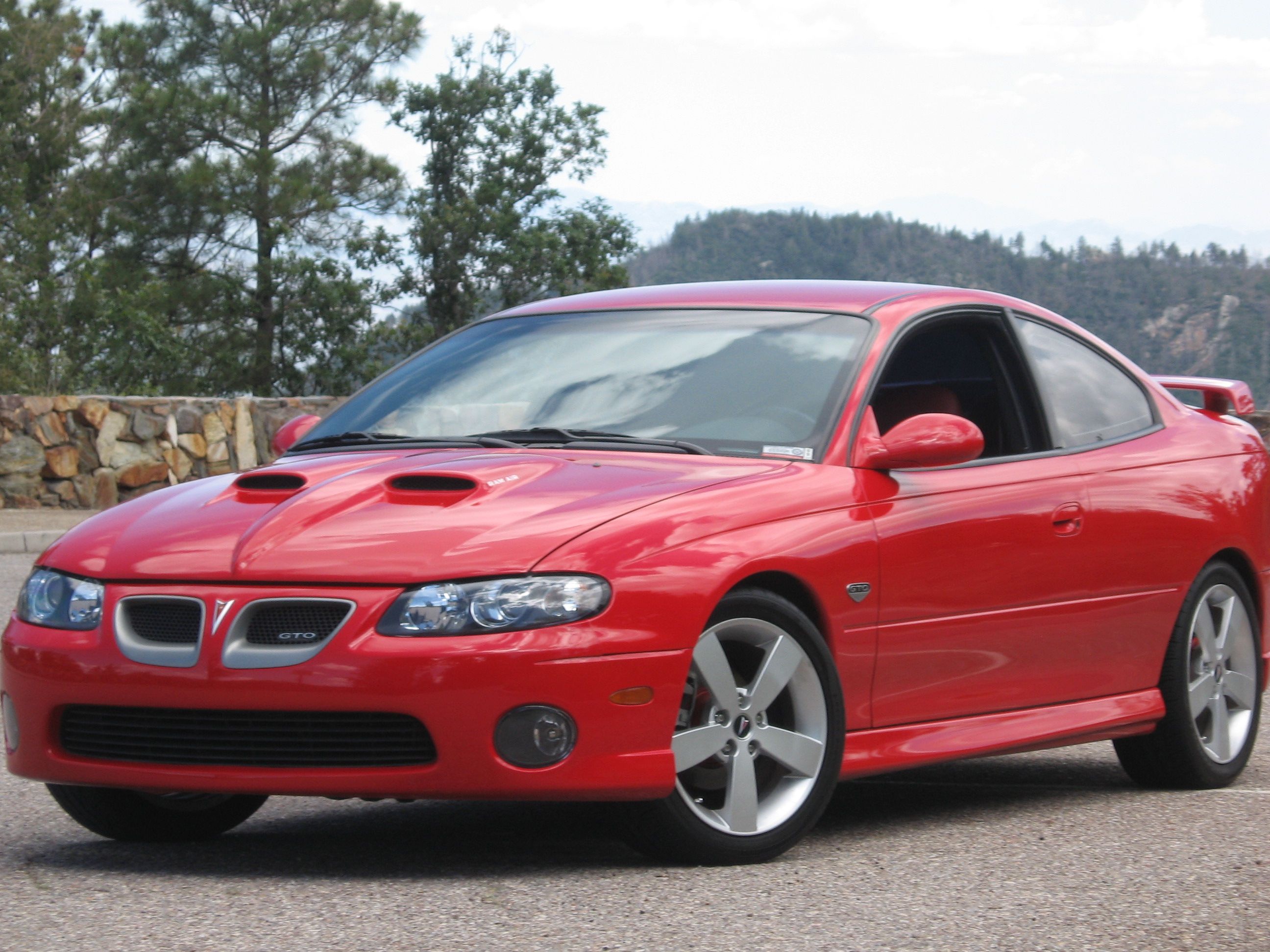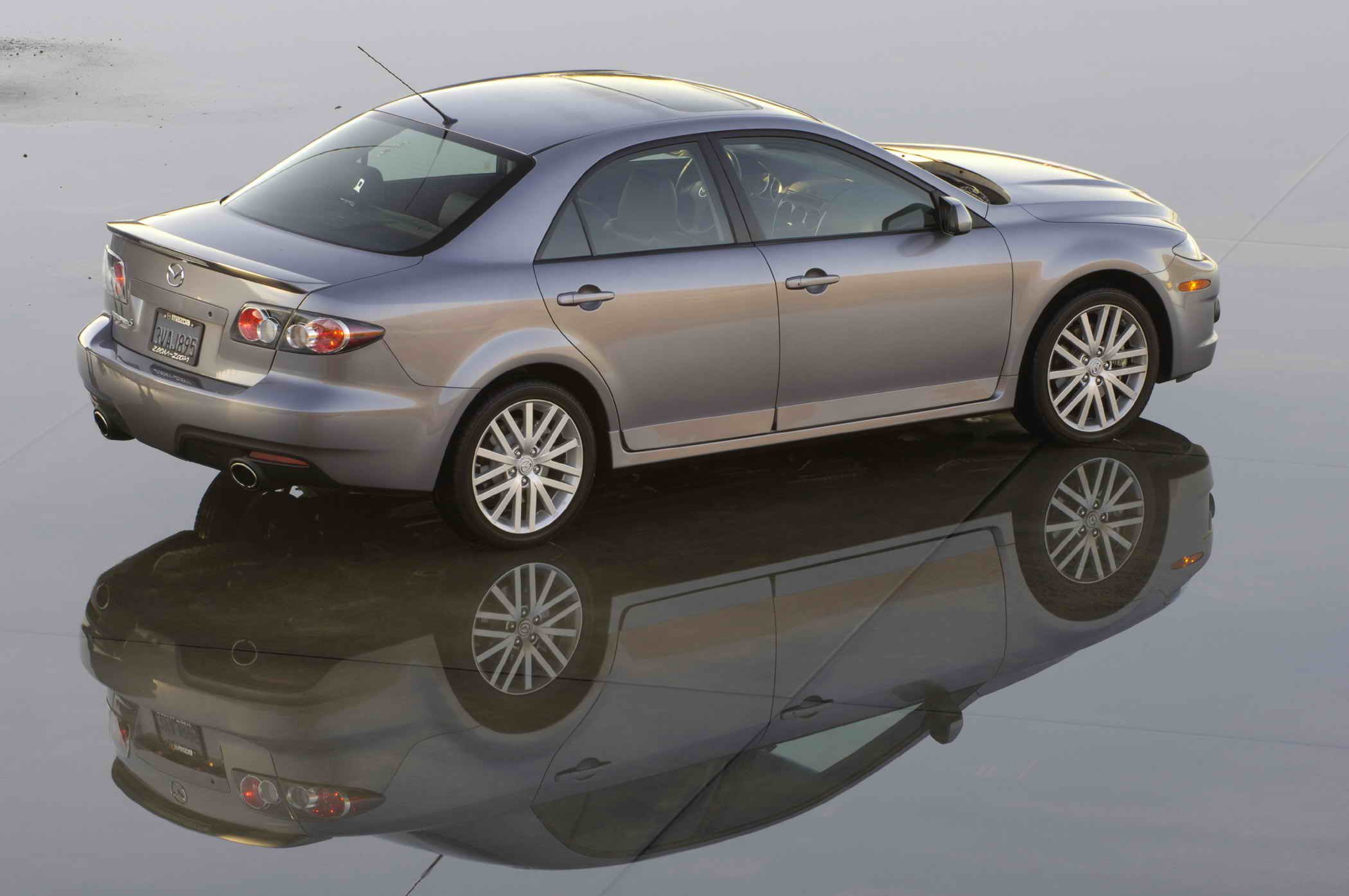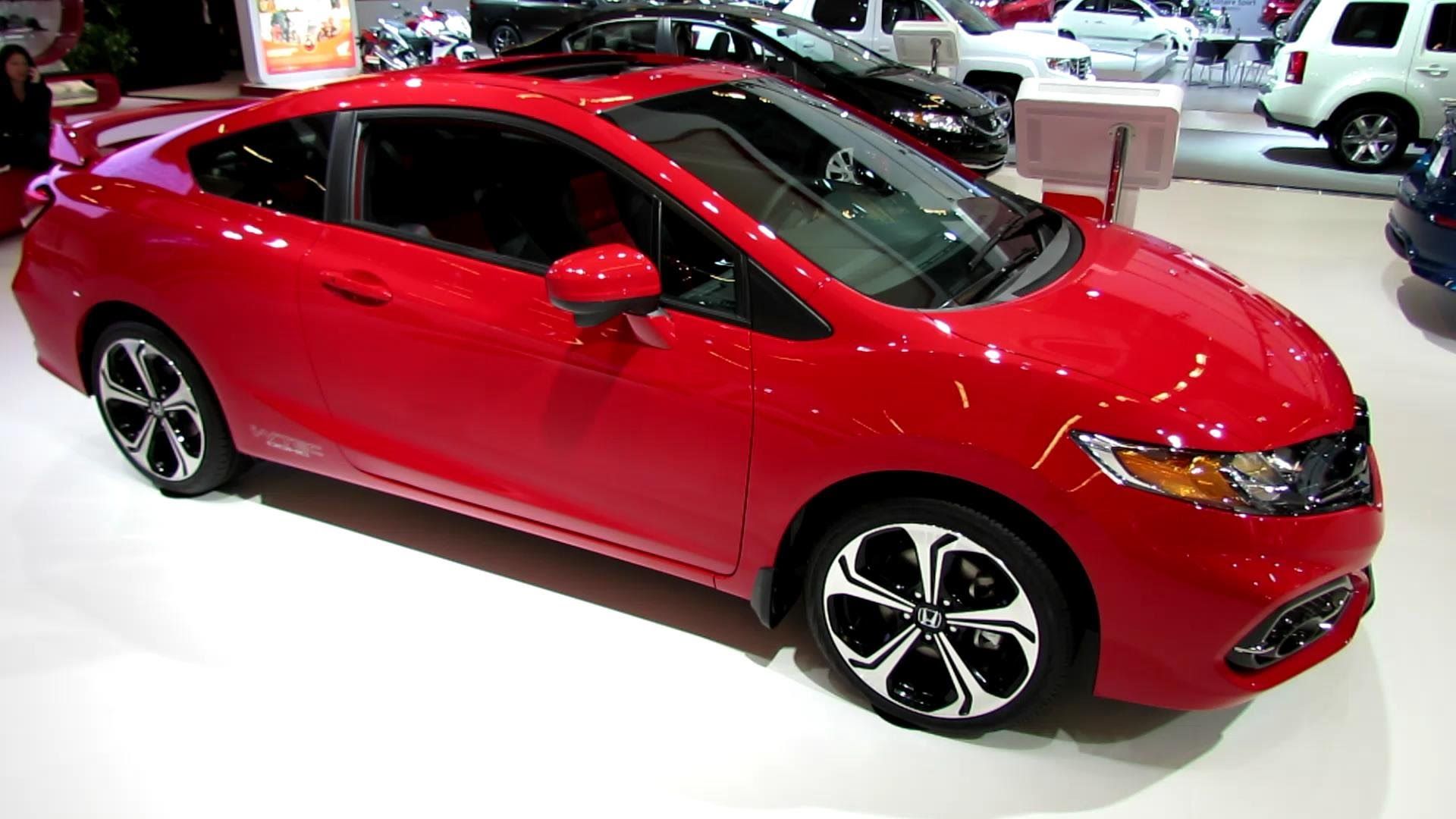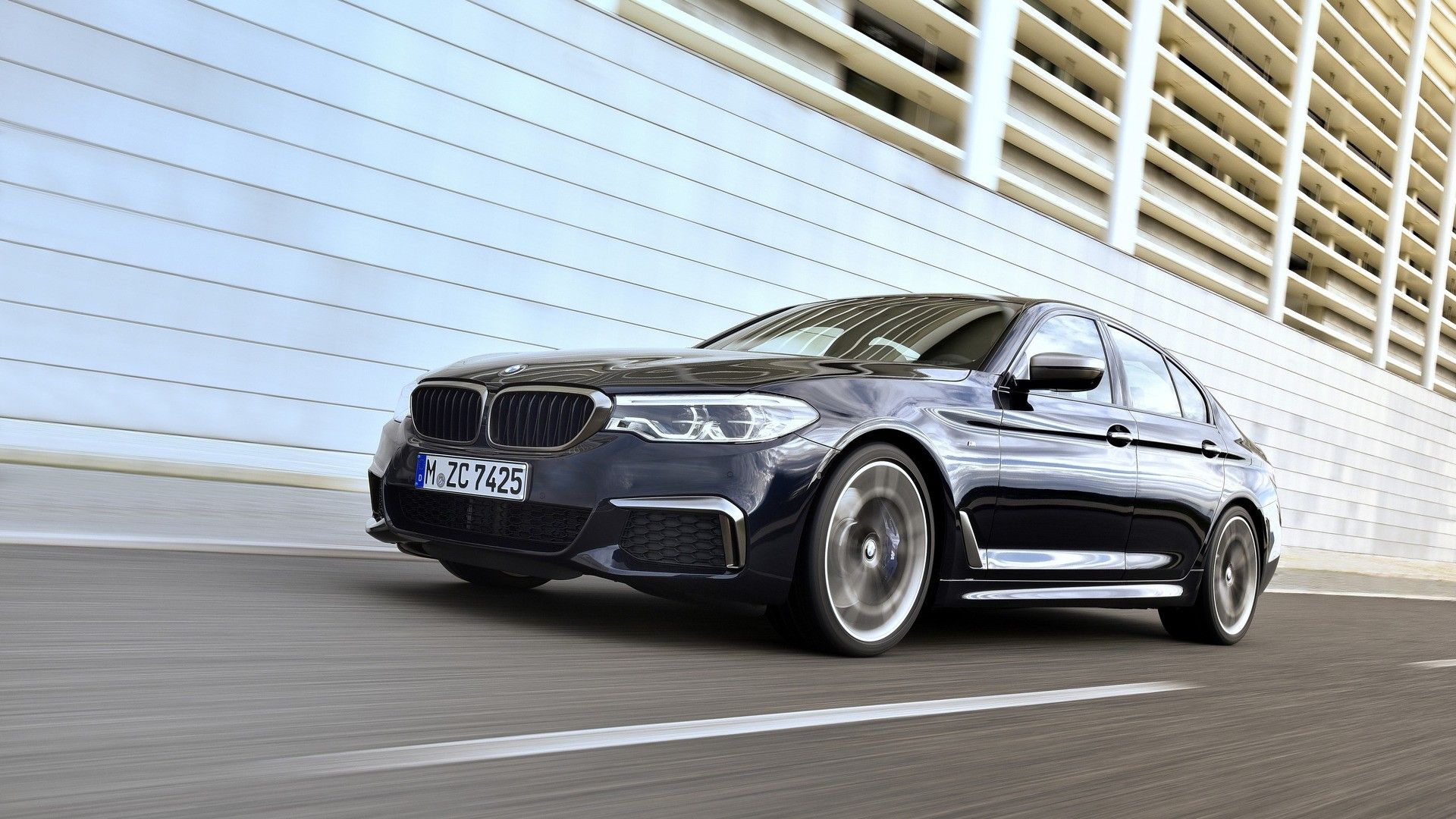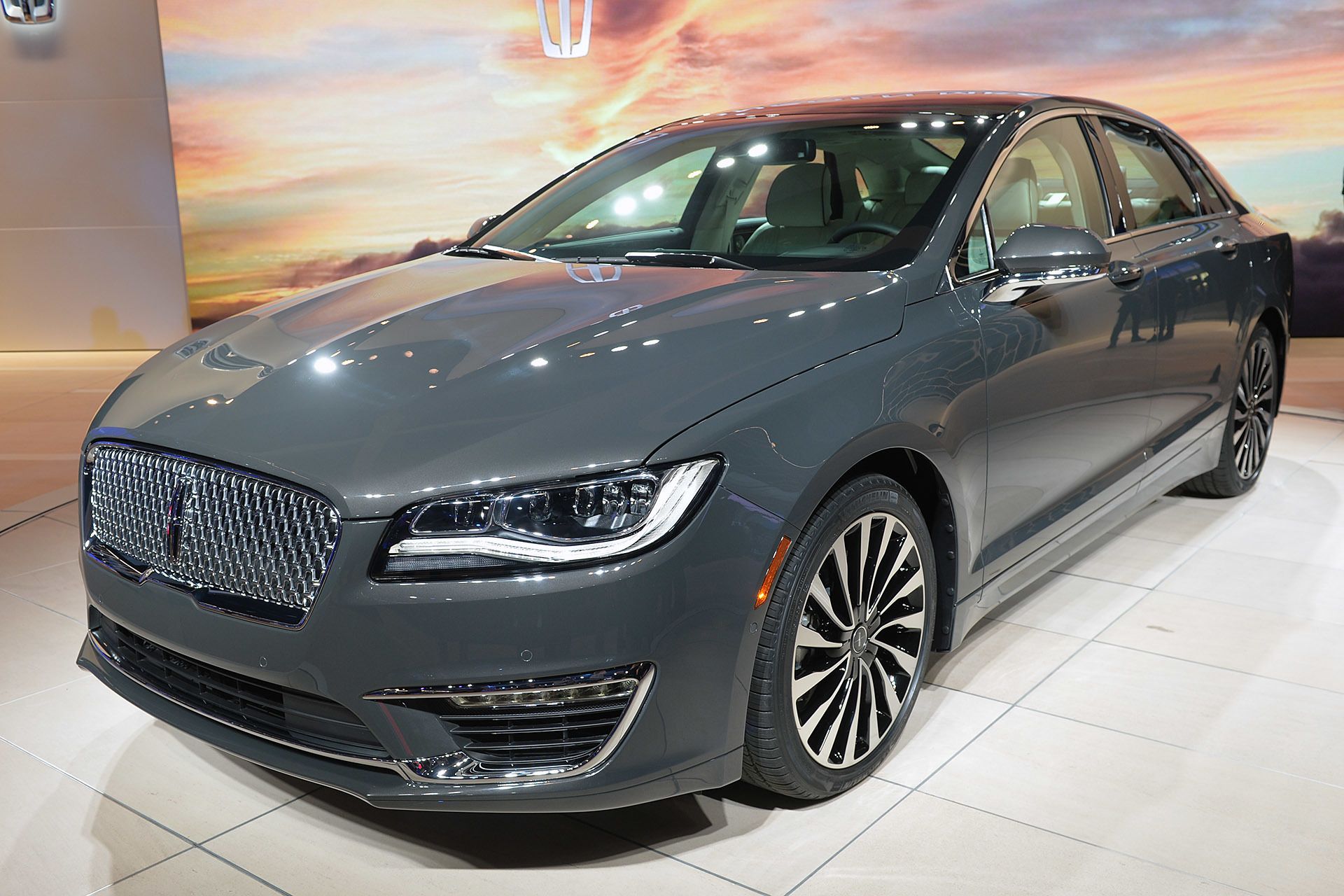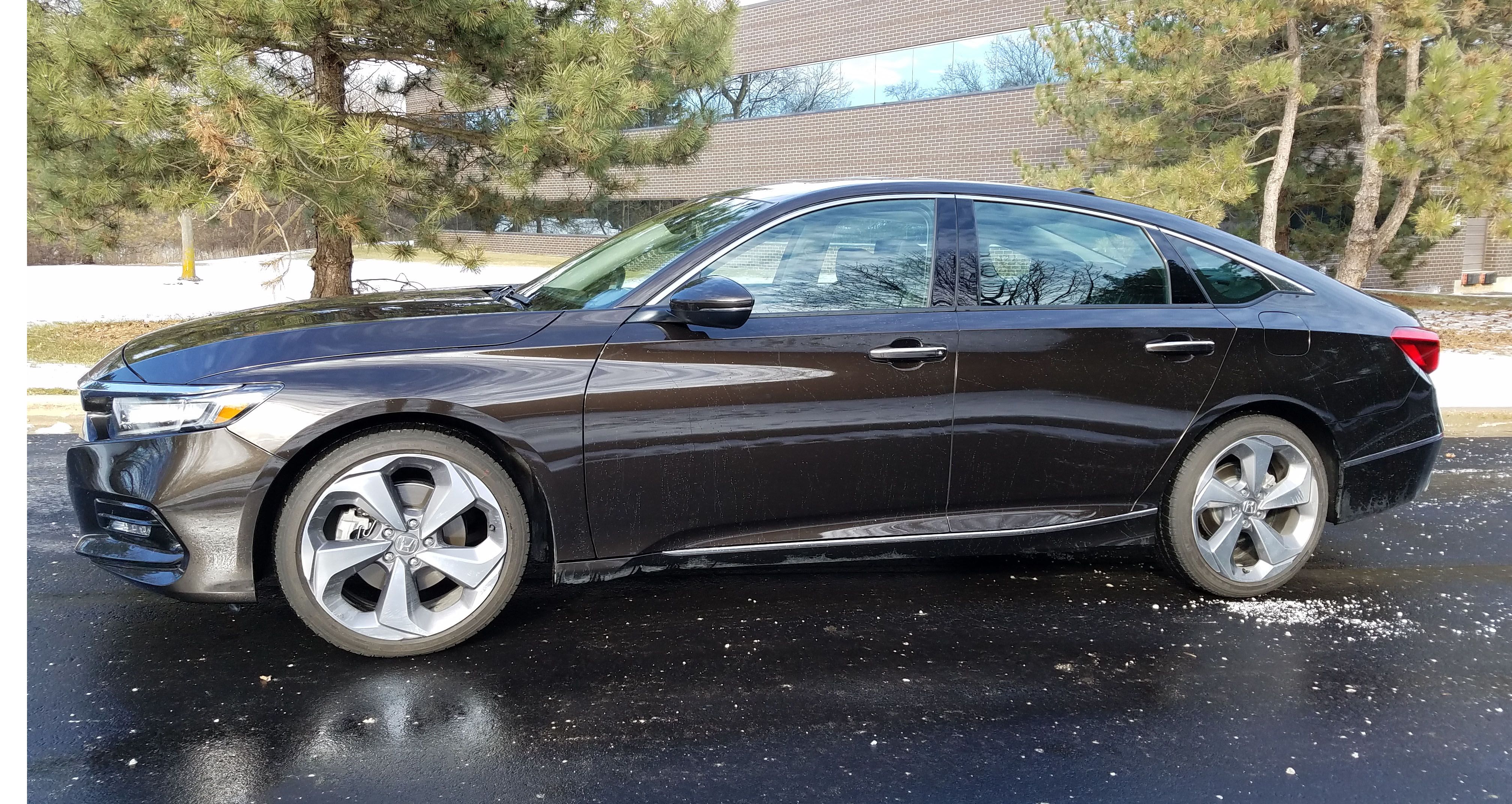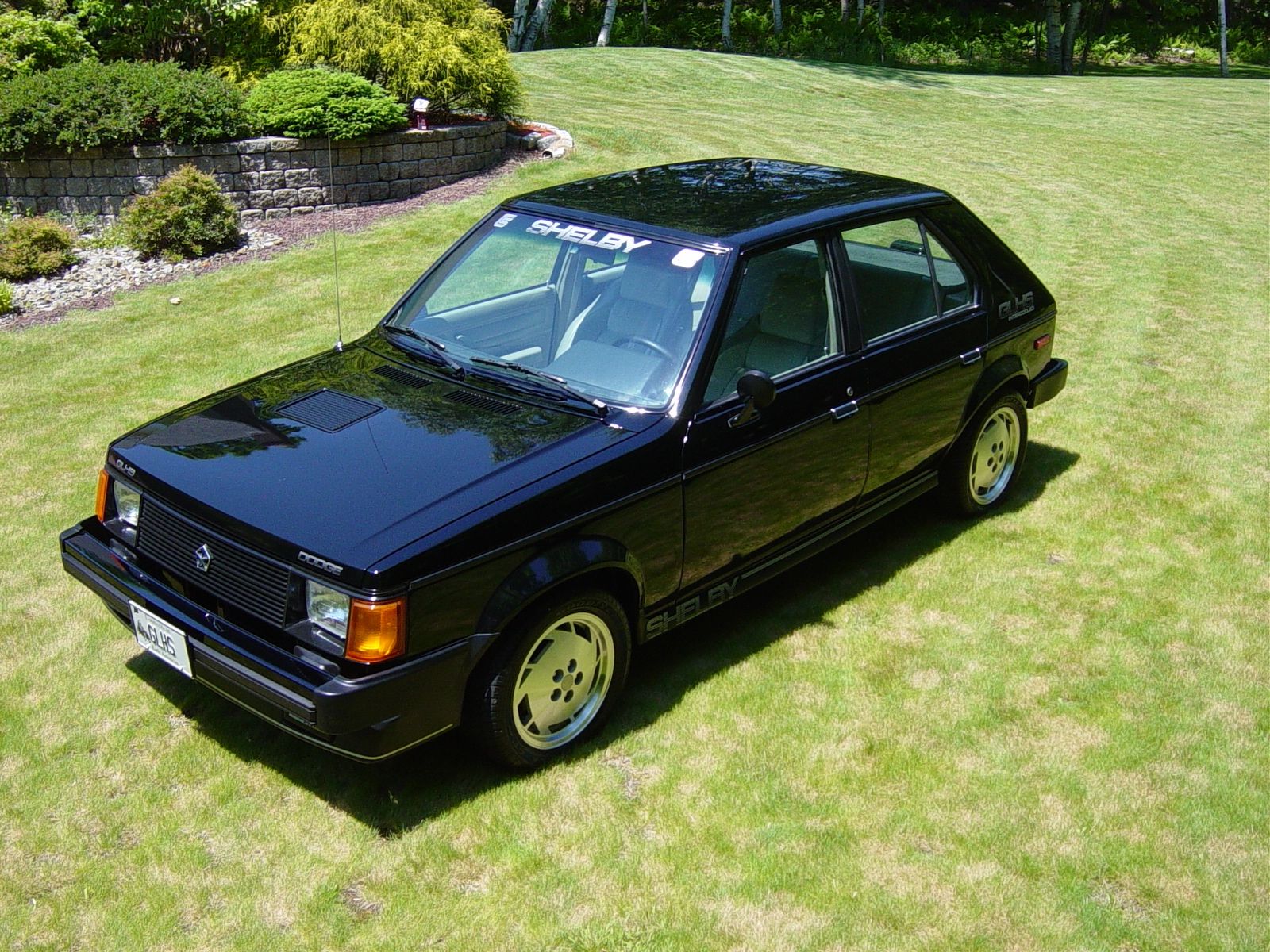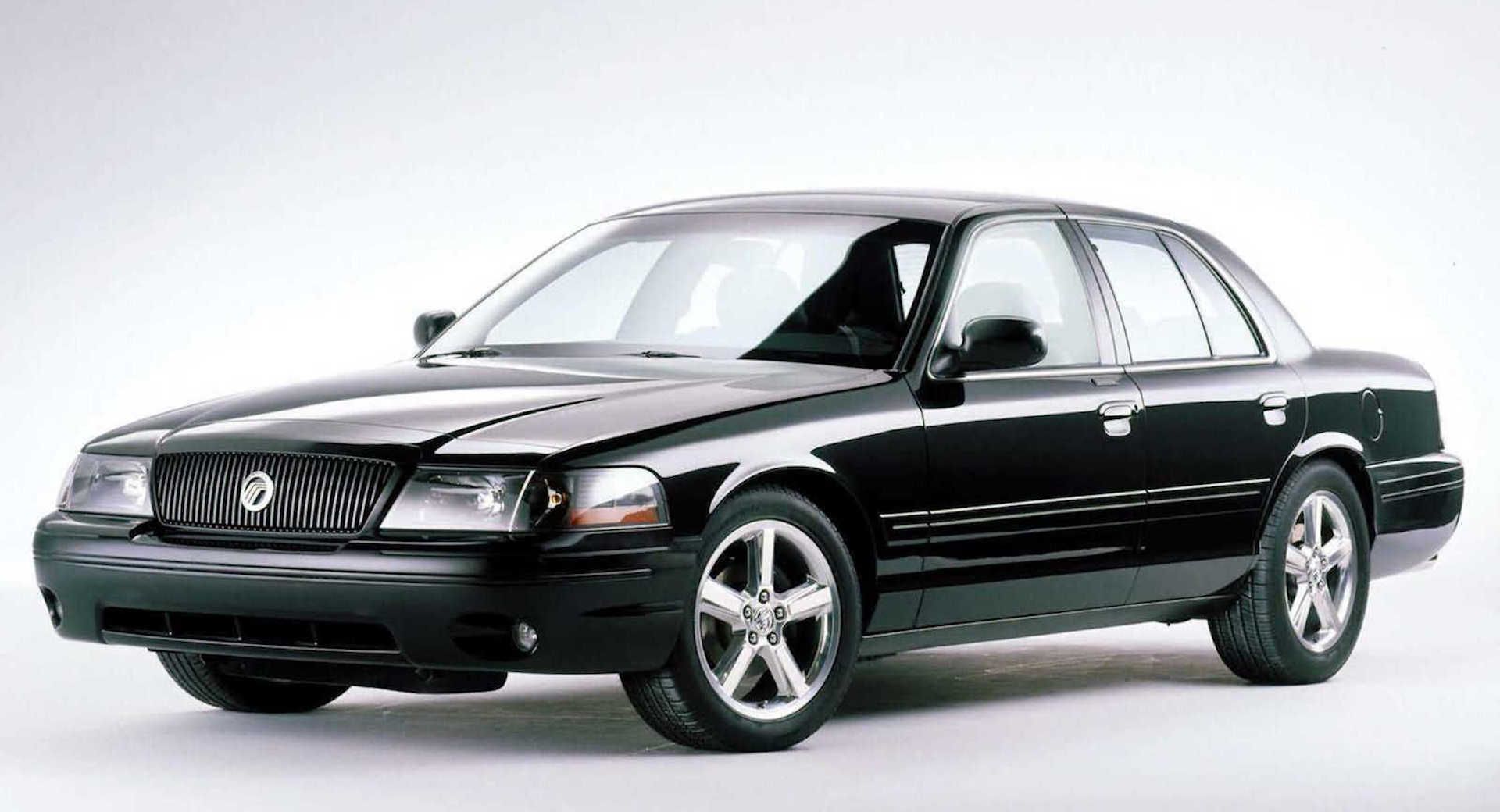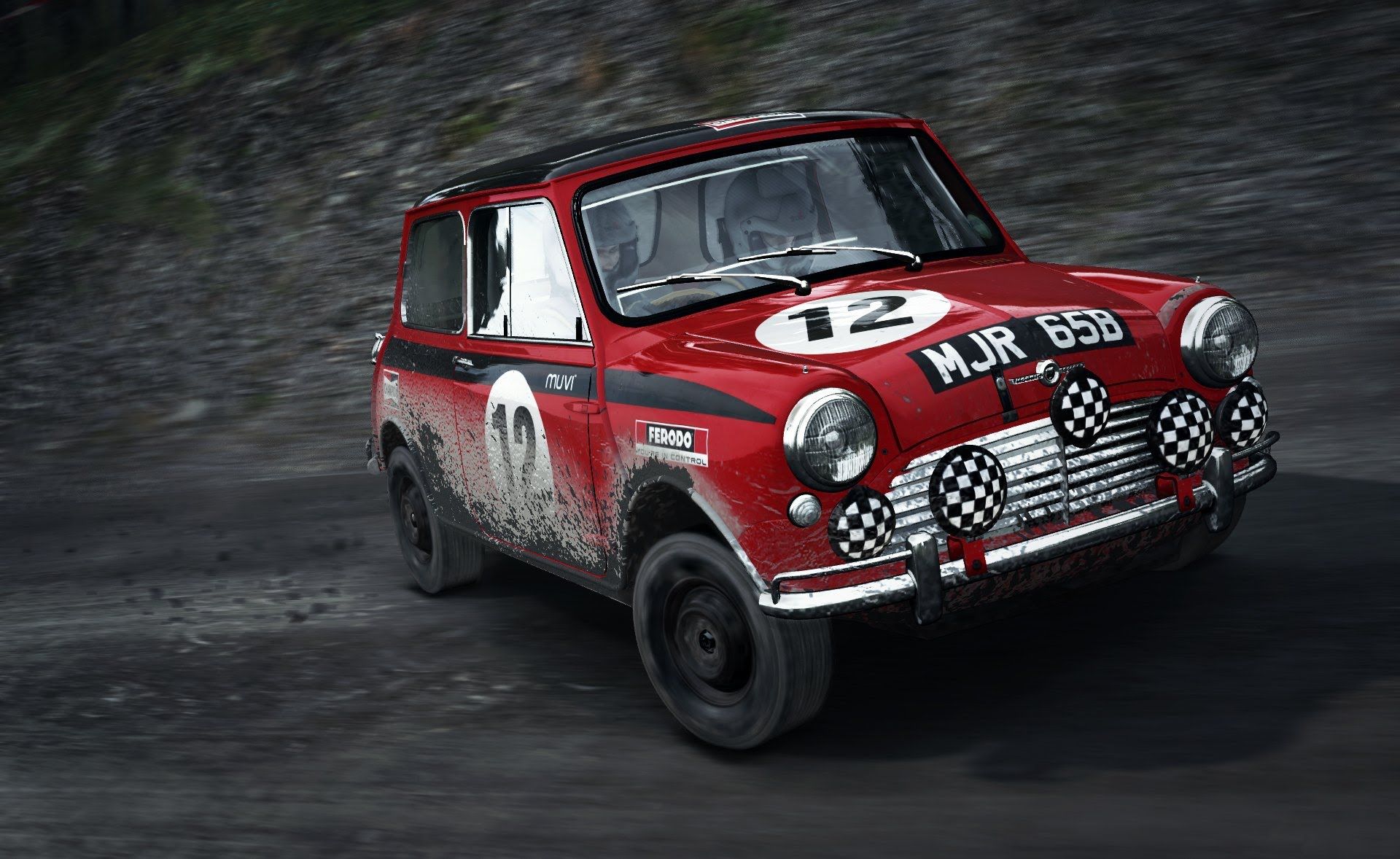The definition of a sports car is pretty simple. Merriam-Webster defines a sports car as "a low, small, usually 2-passenger automobile designed for quick response, easy maneuverability, and high-speed driving." It's pretty obvious when you see a Corvette or Miata speeding down the road to classify it as a sports car. However there are plenty of cars out there that are just as sporty, but because of their looks, don't always receive the classification they deserve.
These vehicles are generally referred to as "sleepers." A sleeper has a very unassuming exterior. They often look like any regular, eco-friendly family car. But when the driver hits that pedal, the car's performance and handling that were so overlooked, become instantly apparent. Would most people love to fork out the cash and be seen in an obviously sporty two-door coupe? Of course! Yet, these types of cars can be a great alternative for the everyday driver. Or the family-man who loves speed, but also has to drop his kiddo off at soccer practice. Or the working professional who wants a fun drive, and also a comfortable and safe commute.
In the last 25 or so years, we've seen these humble vehicles come from just about every make of auto manufacturer. They boast high horsepower and extremely quick quarter miles. Their modest (if not sometimes unattractive) exterior gives anonymity to a car that would otherwise be pulled over. Best of all, you can't beat the surprised faces at the track when a "real" sports car loses to your 4 door sedan.
Let's take a look at 20 sports cars nobody wants to admit are sports cars.
20 Chevrolet SS
The Chevy SS has garnered a huge fan base that is now fighting to get their hands on one of the less than 13,000 released to the US. The sedan, manufactured in South Australia, rolled its last SS out of the factory in 2017. As of now, there aren't any plans for a second generation model.
The SS isn't much to visually admire. It doesn't have any of the usual characteristics of a sports car. It's your standard sedan engineered for passenger comfort and cargo space. The only sporty detail about it is hood vents. Yet this discreet design hides a car that achieves a 13.2 second quarter mile at just over 108 miles an hour.
Under the hood hides a 6.2 liter V8 engine that roars to life, hitting 60 miles an hour in a surprising 4.7 seconds. The 6 speed manual transmission attached to this LS3 is a combination fit for performance, despite its average 4 door nature. The SS also features an adjustable suspension system, which allows you to customize the handling with multiple settings.
The downside, for those looking for a sports car that’s also a good daily driver, is its unfortunate lack of fuel efficiency. But what do you expect from a 3,600 pound car that uses premium? If you value performance over the price of your gas, the Chevy SS is an awesome choice.
19 Mercedes-Benz R63 AMG
AMG was the title of an engineering department that was employed to make performance improvements to Mercedes-Benz vehicles. In 1999, Daimler AG (who owns Mercedes-Benz) acquired sole ownership of the independent company. Jump forward to 2007, and we see the years of improvements reach their culmination with the Mercedes-Benz R63 AMG.
That's right, this is a minivan. Based solely on looks, no one would call this one a sports car. That's when this family ride shocks you reaching 60 mph in 4.6 seconds. Mercedes-Benz’s performance department had a desire to build a 507 hp version of a minivan (they like to call it a “sports tourer”). They definitely achieved it.
The AMG contains a naturally aspirated 6.2 liter V8. It has a stiff suspension and uses oversized Continental tires, creating a firm, but agile ride. The 7 speed automatic transmission leaves the control to the engine. That might be a good thing in a car like this, one less distraction when you have it full of people. The three rows of seats hold six passengers. So make sure you put helmets on all the kids next time you hit the AMG's top speed of 155 on the way to cub scouts.
18 Ford Taurus SHO
The Ford Taurus SHO is another deceptively fast car. SHO stands for "Super High Output," and they aren't kidding. This car is the high-performance model of the Ford Taurus. The SHO was initially only intended to be in production for one year.
But its 1988 release was wildly successful, and over 15,000 were sold in the first year alone. This caused Ford to keep the vehicle in production for three generations over 10 years, totaling 106,465 cars.
The 4 door sedan was the epitome of a sleeper. At first glance, it looks like anything your mom would drive to the farmers market. Well, mom must like horsepower because the original SHO had a naturally aspirated V6 engine that boasts 220 hp. At the time, the only cars that were quicker were BMW's 750 iL and M5. At less than $20,000 the SHO was a fraction of their costs. Nothing in its price range could touch it for performance.
Although it had a successful run through the 90s and even made a comeback in 2010, it eventually saw its end. In its final year of production, only 3,000 vehicles were sold. An unfortunate decline in sales compared to its popular release in the 80s.
17 Chevrolet Cobalt
Like nickel, cobalt is not a particularly valuable or desirable metal. The unappreciated Chevy Cobalt SS shares its name and some of these characteristics. The Cobalt SS was the new compact car of Chevrolet for 2005, meant to replace the Cavalier and the Prizm. The SS came only in coupe form and was the frontrunner in the Cobalt series.
Besides the sporty rear wing, the otherwise non-descript car looks to most people like your average compact. However, under the hood sits a 4 cylinder engine amplified with an Eaton M62 twin-rotor supercharger. At 12.0 psi, the 5 speed manual, front wheel drive car achieves a top speed of 158 mph.
Great attention to detail was paid by John Heinricy (GM's handling master), who tuned the car on multiple tracks in both Germany and the US. Special bushings in the L-shaped forward control arms improved the handling. Eventually, an FE5 suspension replaced the original Cobalt's FE1 suspension, with stiffer springs, aluminum control arms, and a large front anti-roll bar.
The coupe was also designed with a luxury interior and soundproofed cabin, making for a near silent ride as the supercharger whined from the front. Cobalt may not be considered a special metal, but the SS is special to a lot of car lovers who appreciate the sleepers of the early 2000s.
16 Audi RS2 Avant
Audi is well-known for its sports cars that not only look attractive but perform superbly. The Audi RS2 Avant is the exception to the rule when it comes to appearance. This 5 seat station wagon was a collaboration between Audi and Porsche and had a limited release in the mid-90s.
This was the first high-performance car in Audi's signature Avant series. The estate car optimized an inline five cylinder engine with a turbocharger. It was an engine already in use by Audi, but it received ample modifications by Porsche. The larger turbocharger replaced the standard KKK model. It also received a newly configured camshaft, a low-pressure exhaust, and high-flow fuel injectors.
The added power allowed the RS2 to accelerate to over 60 mph in only 4.8 seconds. Not too shabby for a car you can pack full of groceries. The RS2 was not widely exported. It released primarily in Europe, creating the demand for a fan base that extended worldwide. Consumers were impressed by Audi and Porsche's ability to create a vehicle that was both practical and performance-based. And its four-wheel drive system gave it that added unique ingenuity that sets it apart from other sports cars.
15 Buick GNX
The Buick Grand National was the car that defined American muscle in the mid-1980s. It's counter-traditional design set it apart from other muscle cars of that era. Despite muscle cars utilizing a big V8 at the time, the GNX used a well-boosted turbocharged, 3.8 liter V6. Its intentional drag car design was a racer's dream, and its use of a V6 put it well ahead of its time.
The GNX maintained the aggressive look of other GM cars of the 80's. Because of its fully jet black appearance, and a release date close to that of the Star Wars franchise, the GNX was often referred to as "Darth Buick." That description brings to mind sleek aggression. That may be a bit of a stretch for a Buick, a popular brand for grandmas nationwide.
Not meant for corners, the understeer in the GNX could be seen as a negative on a race track. Yet the car flaunts raw power, as the 3,500-pound beast reaches 60 miles an hour in under 6 seconds.
The brawny GNX was the compilation of work between Buick and McLaren Engines to improve upon the Grand National's design. Buick sent a V6 to the engine building company to be improved. The result was a drag-ready car that has stood the test of time for well over 30 years.
14 Cadillac CTS V Wagon
For anyone that says the CTS V Wagon isn't a sports car, keep in mind that from the factory it contains the same engine powering the Corvette ZR1. Based on Cadillac's CTS wagon, the "V" does share a similar body, but the combination of luxury, family car and performance make this the ideal sleeper.
The "Vagon" has the characteristics you would expect of a Cadillac-built station wagon. A stereotypical modern front end screams wealthy, middle-aged couple on their way to tennis practice. Paired with the upward swinging door in the rear (for loading in your rackets with ease), you would never guess the car holds over 550 horsepower.
Coming straight from the factory, the hot rod in a wagon's body holds a 6.2 liter LSA V8. The horsepower, combined with 551 pound-feet of torque, is distributed to the rear end to manage 60 miles an hour in under 4 seconds.
Of course, because it's Cadillac, you still get all the affluence and comfort you would expect from the brand. The V is still winner of the "most powerful station wagon from factory" award. The only downside is its high fuel consumption, but what do you expect from a wagon that can make an 11 second quarter mile?
13 Volkswagen Golf R
Just this year came another station wagon built to impress. With the already successful Golf GTI, Volkswagen decided to up the ante and add more power to their lineup. Just this year saw the release of the Golf R, a power driven performance car meant for the tracks.
Don't be fooled by its unambitious appearance, the R won Car and Driver's 2018 10 Best award. This included their consideration of the car's power, handling, and overall performance, not just its fuel efficiency and low price.
The Golf R is still powered by its predecessor's 2.0 liter, inline 4 cylinder engine. Improvements on the younger model include its own unique cylinder head, an added turbo and direct injection. This brings the Golf R up to 292 hp and 280 lb.-ft. of torque at a carefree 1800 rpm. Its sportiness doesn't come in to question when you watch it meet 9.5 seconds at the end of a quarter mile.
The exterior and the interior of the R have also received improvements to their design. The car was lowered about a half inch and modifications were made to advance the suspension and handling. The interior is more reminiscent of an Audi than a VW. Between its look and its performance the Golf R pushes into sports car territory with a firm shove.
12 Volvo V70R
The theme continues with another sleeper wagon that packs a serious punch. The line of Volvo V70s made their debut in the late 90s and lasted for 3 generations. The V70R was the last of its series, saying goodbye to production in 2007. Its name, V standing for versatility and 70 notating the platform size, added the R, which stood for refined. Well, maybe it should have been an S for sport.
Although the 5 cylinder engine with turbo stayed the same for all generations of the V70s, the R version blew them away with power. The V70R came just a hair shy of 300 horsepower and 300 pound-feet of torque. Volvo's 20 year theme of all wheel drive ensured that power would be distributed equally onto the road. The suspension was redesigned, giving it a lower ride height than the older V70s. And firmer shocks improved it's handling, assisting in the car securing a six second flat quarter mile.
The V70R was tastefully dressed in a diamond stitched leather and Alcantara interior. An exclusive front bumper, 16 inch alloy wheels, and Volvo's own "Road and Traffic Information" navigation gave this family hauler just the touch it needed; performance bundled up into a stylish, little package.
11 Pontiac GTO
Based on the GTO of the sixties and seventies, the 2006 Pontiac GTO doesn't look the part. GM skipped the trend of designing the body off its ancestor's nostalgic looks. However, thanks to the manufacturers in its native-built land of Australia, it has power down under. Although Pontiac brought back the GTO in 2004, it took a few years to get it right...and they definitely did with the 2006 model.
The 2006 model came equipped with a 6.0 liter LS2 engine, giving the old GTO and the new more to share than just a name. The historic performance that GTO's were known for was back with 400 horsepower. The '06 GTO really showed its similarities in how it compared with cars that cost nearly double from the factory.
With a 4.6 second quarter mile, you would expect the '06 GTO to be popular amongst consumers. Even with upgrades to its appearance and suspension, the demand just wasn't there. By its final year, the performance bargain dropped in popularity, selling only 13,948 units.
A lot of its failure could be blamed on GM's decision not to give the car a historically muscle look. Had they done this, the sleeper could still be in production today.
10 GMC Typhoon
The early 90s saw a revolutionary new transition in what you might call sports cars. Although this isn’t your standard two door coupe, the GMC Typhoon competed with the supercars of that era. It was the beginning of car manufacturers creating performance based SUVs. We still see the aftermath of this today, with vehicles like the Jeep Trackhawk and BMW X6M.
The Typhoon was based on the 1991 GMC Jimmy, a midsize SUV of the same year. But the Typhoon has power that the Jimmy just can't compete with. A 4.3 Liter LB4 V6 sits under the hood with a 4 speed automatic transmission and a turbo. The engine provides 280 horsepower, more than capable of getting the nearly 4,000 pound beast moving. The 360 foot pounds of torque are distributed to and split by the transfer case, sending 35% to the front and 65% to the tail. This gives the all wheel drive SUV plenty of traction as it claws at the pavement.
This GMC Typhoon used that power and traction control to achieve 60 miles per hour in 5.3 seconds. A 14.1 second quarter mile at 95 mph might not be as impressive as other sports cars. But that is an incredible show of power for a large vehicle that would otherwise be described as lumbering.
9 Mazdaspeed6
At it's release, the manufacturer itself claimed that the Mazdaspeed6 was "the highest-performing, best-handling sedan Mazda has ever built." And it very well still might be. Although we now see the 5th generation of the Mazda 6 rolling around, it just doesn't match the hidden power of the '06 model.
The Mazdaspeed6 was equipped with a modernized MZR 2.3 liter 4 cylinder. While the 2018 remains an inline 4 banger, and even offers a turbocharged crossover version, the older family hauler still has it beat. Back in 2006, the sedan was using 270 horsepower to reach 60 mph in 5.5 seconds. Compare that to the disappointing numbers of the 2018s horsepower (just making it into the low 200s).
With the 2006 model, Mazda reduced the compression ratio, added direct fuel injection, an air-to-air intercooler and a Hitachi turbocharger. They also strengthened the suspension from other Mazda sedans to achieve a "50 percent gain in torsional rigidity." The stiffer suspension used more solid bushings, shock dampening, and stronger brakes. They paired this all with 18 inch alloy wheels to create a roadworthy handler.
The Mazdaspeed6 is the pinnacle car for a 4 person family who still appreciates some spirited driving once in a while.
8 Honda Civic Si
When you think of ordinary, you think Honda Civic. The brand that is known for its affordability and endless safety awards is not what you might call a sports car...initially anyway. It's consistently average and slightly improved design over the years has made it a number one seller. You might never even realize that the 9th generation Honda Civic Si is an awesome sleeper.
The 2014 Si was the first of its series to use a brand new engine. The 2.4 liter K24Z7 series engine replaced all the other Civics K20Z3. With it came increased displacement and a newly tuned exhaust system. The engine was paired with a transmission that was only ever offered in a 6 speed manual.
The Si, which stands for Sport Injected, was sold in both coupe and sedan form, and had an optional full body kit. New sway bars, a more stiff chassis and lowered suspension enriched the cars handling capabilities. This model was also lighter than prior generations, weighing in at under 2900 pounds.
Bit by bit, Honda improved on the Civic's design and performance over the years, bringing us a car that's reliable, attainable and sport infused (or "sport injected"). It may not be an obvious sports car, but for the average driver who likes a little more than just economy, its the perfect choice.
7 BMW 550i Xdrive
Sometimes when a vehicle has most (but not all) the features of a sports car, the consumer wins. With the BMW M550i xdrive, the consumer gets just that. A car that's almost as good as an M5, but significantly cheaper and more discreet. The M550i is to BMW, what the Camaro was to Chevy. It's a car for people who want an M5, but don't want to fork over the cash.
The M550i is one of many performance cars that BMW has created. This sports car runs on a 4.4 liter V8 that's twin-turbocharged. The engine coupled with an 8 speed automatic transmission gives the car a whopping 456 ponies. And with 480 foot pounds of torque, the M550i has major power as it achieves 60 mph in a cool 4 seconds.
Another beautifully designed car of the series, the M550i came with several modifications fit for going fast. Stiffer chassis, a sport exhaust, and bigger M sport brakes increased the car's performance. Active all wheel drive lets you adjust the steering and add control. Finally, BMW's Adaptive M Suspension offers 3 modes (comfort, sport and sport plus) to adjust your ride.
An alternative to the M5, the M550i offers a more subdued appearance and amazing performance at a lower price. Sure, we'll take that sports car.
6 Lincoln MKZ
With the Lincoln MKZ, we’ve seen Ford deliver nearly 20 years of luxury, performance sedans. Originally known as the Zephyr, the MKZ was the refreshed version, released in 2007. The design didn’t differ much in looks from its older siblings (Zephyr, Fusion and Milan), but the changes came where it mattered. The engine was tuned to perform, and consumers now have multiple generations of sport, luxury sedans from which to choose for a decent track-day adversary.
The 2012 MKZ originally held a 3.5 liter DOHC Duratec 35 V6. The engine produced 265 horsepower and 249 ft.-lbs. of torque. Its all wheel drive system helped the sedan appropriately dispense the power to all 4 wheels, giving it optimal traction. Motor Trend found that the car could reach 60 miles per hour in 6.8 seconds. Not too bad for a car with interior wood paneling fit for couples in their 70s.
In 2012 we saw more improvements to the MKZ, including a Hybrid option. This model was still a V6, but the reinvigorated car had increased performance, and was now reaching 60 mph in a quick 5.3 seconds.
Finally, in 2017 we saw additional modifications to the already successful performance sedan. The new Lincoln MKZ 3.0T is armed with a 3.0 liter V6 engine and twin turbochargers, further increasing its skill on the track. This brings its most recent 0-60 mph to 5.3 seconds. The MKZ has impressed for years, both as an entry level luxury car and a sports car.
5 Honda Accord 2.0T
If you stop by a Honda dealership, you’re likely to see couples in their 30’s and 40’s, maybe with a few rugrats in tow. A Honda is the sensible car you buy when you want good fuel economy, safety features galore, and an affordable ride. You don’t expect to test drive a car at the dealership that has all those features and will get you to 60 mph in 5.6 seconds. The 2018 Honda Accord 2.0T (yes, an Accord), fits all those descriptions.
So what gives this practical car that power? The same engine as a Civic Type R, but with a slightly smaller turbo. The 10th generation Accord is powered by a 2.0 liter VTEC turbocharged 4 cylinder engine. It puts out 252 horsepower and 273 ft.-lb. of torque. Despite the front wheel drive, the car handles very well. This is in part because of the extra two inches added to the wheel base.
Honda really took car fans by surprise with the new 10 speed automatic transmission, available only on the 2.0T. Driver's of the car boast that the transmission shifts smoothly and decisively. Between the engine and trans, the car definitely isn't lazy.
If you want to really tick all the boxes Accord has to offer, you can also take advantage of the 2.0T's Hybrid option. What a world we live in that a sports car doesn't have to be a gas guzzler.
4 Lotus Carlton
A typical boxy car of the 90s, the Lotus Carlton was a unique venture to upgrade the Vauxhall Carlton/Opel Omega A by Lotus. The intent was to transform an ordinary sedan into a performance car. Lotus succeeded and released what was, at the time, the fastest 4 door production car worldwide.
The Lotus Carlton received minimal cosmetic changes, making it an unassuming rival. It was given the addition of a rear spoiler, vents on the hood, a body kit with wider wheel arches, and Lotus badges. The car looks and behaves as a traditionally reliable sedan, but under the hood sits a 3.6 liter straight 6 with twin turbos. The Carlton's transmission was modified from the 3.0 liter 6 speed manual, used by the Corvette ZR1.
These changes under the hood put the world's fastest car at 377 horsepower and over 400 pound-feet of torque. The Carlton was able to reach 60 mph in 5.2 seconds, and has a top speed of 177 miles an hour. Not what you would expect from the car's average appearance and reserved, Imperial Green color.
The car might not have looked fancy or sporty compared to Lotus' other sports car designs, but it was intended to perform (and perform it did).
3 Dodge Shelby GLHS
The Dodge Shelby is a unique beast for many reasons. It was based on the Dodge Omni GLH. The added “S” to its acronym gave the car its nickname “Goes Like Hell S’More” by Carroll Shelby himself. This was a limited release car, with only 500 made in 1986.
The redesign on the Omni gave the GLHS a lot of upgrades that improved its performance. The modifications included power assisted steering, an altered intake manifold, and a new position for the throttle body. But the real improvement was to the turbochargers boost. This lightweight car (weighing in at just under 2500 pounds) had a pressure increase from the Omni's 9.0 psi to 12.0 psi. A big increase that was easily felt when getting up to speed in the featherweight car.
New Koni shocks were also added, and the ride height was reduced by a half inch. With the custom 6 inch cast aluminum Shelby Centurion wheels, and all the aforementioned upgrades, the car was definitely faster, but also rode worse. The improvements were meant to help performance and handling, not make for a comfortable ride, and it did just that. At 175 hp (up from the GLH at 146 hp), the GLHS now reached 60 mph in 6.7 seconds.
The GLHS was a rarity and it's instantly recognizable with the custom Shelby design package and logo on the front. It may not be much to look at, but this rare ride was an impressive sleeper in the late 80s.
2 Mercury Marauder
Coming from Ford’s Panther platform is the Mercury Marauder. The design was based on the Crown Victoria, and it’s easy to see the relation. An obvious American-style car with an expansive design, a V8 and a body-on-frame assembly, the Marauder had the best improvements of all the Panther cars.
The Marauder was initially seen at SEMA in 1998. The final design of the car didn't pack as much of a punch as the concept, but a dual-cam adapted version of the Mustang Cobra's V8 still impressed the masses. The car could initially only be purchased in one color: black.
And you'll recognize bits of the Marauder that were Frankensteined from other Ford vehicles (Crown Vic tail lights, front and rear springs from the Police Interceptor and Town Car respectively, etc).
It wasn't incredibly fast, hitting 60 mph in more than 7 seconds, and only reaching a quarter mile at 15.6 seconds. So what is so special about the Mercury Marauder? Why are they so coveted in the American muscle world? Most fans appreciate the car for its historic qualities featuring a combination of the best the Panther platform has to offer. Beyond that, it’s incredibly desirable as a tuner car. When you already have a rare car with a great base, the potential improvements are easy to see, making the Mercury Marauder a hidden gem in the sports car world.
1 Mini Cooper
Cute. Compact. British. This is what most people think of when someone says Mini Cooper. It's an adorable little icon of 60s British culture. But those stripes aren't just for looks, my friend. The Mini Cooper cars successfully competed as both race and rally cars, and even won the Monte Carlo Rally three years consecutively.
In 1961, British Motor Company worked with Cooper Car Company to build a car that was both fuel efficient and could fit four passengers (due to a fuel shortage). John Cooper was widely known for his building of rally and Formula 1 cars. So it comes as no surprise that he saw potential in the Mini, and his little Cooper packed legit performance.
Although it was technically a small economy car, the Mini Cooper contained an 850 cc 4 cylinder BMC engine. The engine was placed in the front, transversely, with the idea that it would power the front wheels. Due to the tight quarters, the transmission was positioned underneath the engine. This entire concept was revolutionary.
The high performance car was a hit amongst rally racers. The Mini Cooper was on the road to win at Monte Carlo for its fourth year, but due to a headlight technicality, the car was kicked out of the race. Perhaps the other drivers felt threatened by the Mini's power.
Sources: caranddriver.com, jalopnik.com, wikipedia.org

